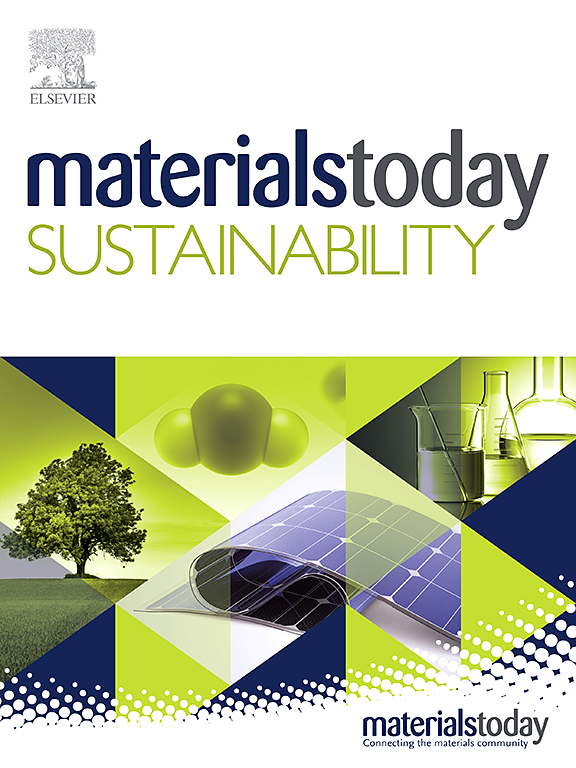全面了解稻壳浸出的实验因素及其对生物二氧化硅热化学性质和特性的影响
IF 7.1
3区 材料科学
Q1 GREEN & SUSTAINABLE SCIENCE & TECHNOLOGY
引用次数: 0
摘要
浸出是一种预处理,去除在生物质热化学转化过程中负责不良反应的离子种类。尽管有许多报道的浸出条件,特定因素对离子种去除的影响仍然不够了解,无法广泛应用。本研究探讨了各实验因子在水介质中的最佳水平与实验因子之间的关系,重点研究了pH和酸类型对稻壳和生物二氧化硅理化和热化学性质的影响。最佳浸出条件为HCl, pH为1.5,70°C, 150 min,每80 g H2O 1 g稻壳,30 rpm,得到纯度为99.45±0.04%的生物二氧化硅,表面积为318±10 m2 g−1,孔体积为0.46±0.01 cm3 g−1。浸出促进了热分解过程中的脱挥发,但抑制了生物炭的氧化。29Si核磁共振分析显示,生物二氧化硅中含有16.4%的Q3和Q2硅醇基团,SEM-EDX证实其纯度高,孔隙率高。这些结果为改进浸出方法提供了关键见解,有助于生产质量更好的生物二氧化硅,并支持其在环保工业应用中的使用。本文章由计算机程序翻译,如有差异,请以英文原文为准。

Comprehensive understanding of the experimental factors determining the leaching of rice husk, and their effect on the thermochemical properties and characteristics of bio-silica
Leaching is a pretreatment that removes ionic species responsible for undesired reactions during biomass thermochemical transformation. Despite numerous reported leaching conditions, the impact of specific factors on ionic species removal remains insufficiently understood for widespread application. This study investigates the relationship between experimental factors and their optimal levels in aqueous medium, focusing on the effects of pH and acid type on rice husk and bio-silica's physicochemical and thermochemical properties. Optimal leaching conditions were identified as HCl at pH 1.5, 70 °C, 150 min, 1 g rice husk per 80 g H2O, and 30 rpm, yielding bio-silica with 99.45 ± 0.04 % purity, a surface area of 318 ± 10 m2 g−1, and a pore volume of 0.46 ± 0.01 cm3 g−1. Leaching enhances devolatilization during thermal decomposition but inhibits biochar oxidation. 29Si NMR analysis revealed 16.4 % Q3 and Q2 silanol groups in the bio-silica, while SEM-EDX confirmed its high purity and porosity. These results offer key insights into improving leaching methods, helping to produce better-quality bio-silica, and supporting its use in eco-friendly industrial applications.
求助全文
通过发布文献求助,成功后即可免费获取论文全文。
去求助
来源期刊

Materials Today Sustainability
Multiple-
CiteScore
5.80
自引率
6.40%
发文量
174
审稿时长
32 days
期刊介绍:
Materials Today Sustainability is a multi-disciplinary journal covering all aspects of sustainability through materials science.
With a rapidly increasing population with growing demands, materials science has emerged as a critical discipline toward protecting of the environment and ensuring the long term survival of future generations.
 求助内容:
求助内容: 应助结果提醒方式:
应助结果提醒方式:


